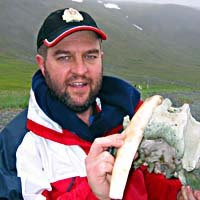The Ultimate Australian Souvenir?
Finding your own take-home treasure in the real Australian outback.
Pearler
 Strolling along Dampier Terrace in Broome, you know you’re in the expensive part of town. Lined up along the street adjacent Roebuck Bay are all the big names in Australian pearling; Linneys, Kailis and Paspaley.
Strolling along Dampier Terrace in Broome, you know you’re in the expensive part of town. Lined up along the street adjacent Roebuck Bay are all the big names in Australian pearling; Linneys, Kailis and Paspaley.Sprinkled amongst the big ticket families are galleries, stores and retailers all catering to the fascination with Pinctada Maxima the Australian South Sea Pearl. Renown for their size and lustre, the Aussie pearl grows happily in the tidal-fed, nutrient-rich waters, producing some of the finest pearls anywhere in the world.
When buccaneer and explorer, William Dampier first sailed along the coast in Cygnet in 1688, he collected botanical specimens and a few shells from the beautiful but otherwise desolate landscape. He returned aboard Robuck in 1699, but still failed to recognize the rich lode that hid tantalizingly below the waves.
It wasn’t until the latter part of the 19th Century that pearl shells were harvested for their jewel, but like the mainland gold rushes decades before, pearling took off in a big way and by the 1930s, the prized shell was in danger of becoming extinct, forcing the government to enforce harvesting regulations.
Today visitors can indulge their passion for pearls by perusing the many square metres of glass cabinet space devoted to the shiny, finished product or immerse themselves in the history and glamour of the tiny bauble cultured and presented in such an unlikely, remote location.
Or for interpretive tours, see The Pearl Luggers or award-winning tour operator, Willie Creek Pearls.
More information: www.australiasnorthwest.com
Dust Lust
“Here you go,” says Kym White with a cultured tone that seems incongruous in the Australian outback. Her finely manicured hands load a fat pile of ‘wash’ into the sieve with a rough, well-used shovel. Any search for a sapphire thus begins with a pile of dirty gravel.
Back in 1979, young ‘Smiley’ Nelson was walking home from school across some of the fields mined by the big commercial operators and he kicked up a huge yellow sapphire weighing 2019 carats. The stone passed through a number of owners in the intervening years and recently sold as a 1400-carat cut stone in New York for $1.2 million.
In tiny Rubyvale, inland from the Queensland coastal resort town of Rockhampton, the streets are not paved with gold so much as strewn with gems. The lure of the little rocks is real and many folks just passing through end up staying.
Kym and husband Dale operate the Miner’s Heritage Walk-In Mine where travellers can stop by and try their hand at the time-honoured art of sieving dirt.
Take the full sieve, which is about the size of a frisbee, and plunge it into a 44-gallon drum full of water, jiggling and bouncing it vigorously just below the surface. This action washes off the clay dust and helps sort the stones into ‘like’ densities. The theory is that the valuable stuff will end up in the centre. Next, the whole lot is up-ended carefully onto a sorting rack.
With a sharp eye, you might just spot the sapphire peeping out from the rubble. Kym is at hand to help you sort the ironstone, quartz and zircon then take your precious inside to be set into a ring or pendant immediately so you can wear your trophy home!
CONTACT DETAILS
Phone: 07 4985 4444
Email: miners_h@tpg.com.au
More information at: www.queenslandholidays.com.au

Dig Deep
You could be a location scout for the next Mad Max or Star Wars movie wandering among the mullock heaps dotting and scarring the bleak landscape around Lightning Ridge, Andamooka or Coober Pedy. And why would you? The opal.
Silica, with the colour the result of refraction of light off the microscopic particles forms opal. Opals were all formed during the Cretaceous period between 65 -140 million years ago, in an ancient inland sea called The Great Australian Basin. Now they are sought after with the same single-mindedness as gold or diamonds.
Opals occur underground at depths up to 30 metres and are retrieved by methods as simple as a pick and shovel assisted by secondary methods like bore drills and even dynamite. Ultimately though, it’s a slow, painstaking and dirty job.
Lightning Ridge deep in the New South Wales outback is the home of the black opal, the rarest and most valuable form of opal. The Australian Opal Centre [www.australianopalcentre.com] is under development in the tiny town and in the meantime you can view some of the rarest and most valuable opals in the world. Top of the range gem quality black opal can fetch prices up to AUD $15,000 per carat.
For those wanting to get an authentic, dusty hands-on experience, scoot over to the famous underground town of Coober Pedy, north of Adelaide for the daily, four hour “Down N' Dirty” tour.
Apart from historical and interpretive information, you’ll get a hardhat, torch and shovel and a chance to dig for opals just like the miners do. When you’ve piled the dirt high, then it’s time to start noodling (fossicking) for your gem.
Opals are valued on their foreground colour, brightness and pattern. Brightness is most important – the brighter and stronger the colours the better.
Coober Pedy: More information www.southaustralia.com




0 Comments:
Post a Comment
Links to this post:
Create a Link
<< Home